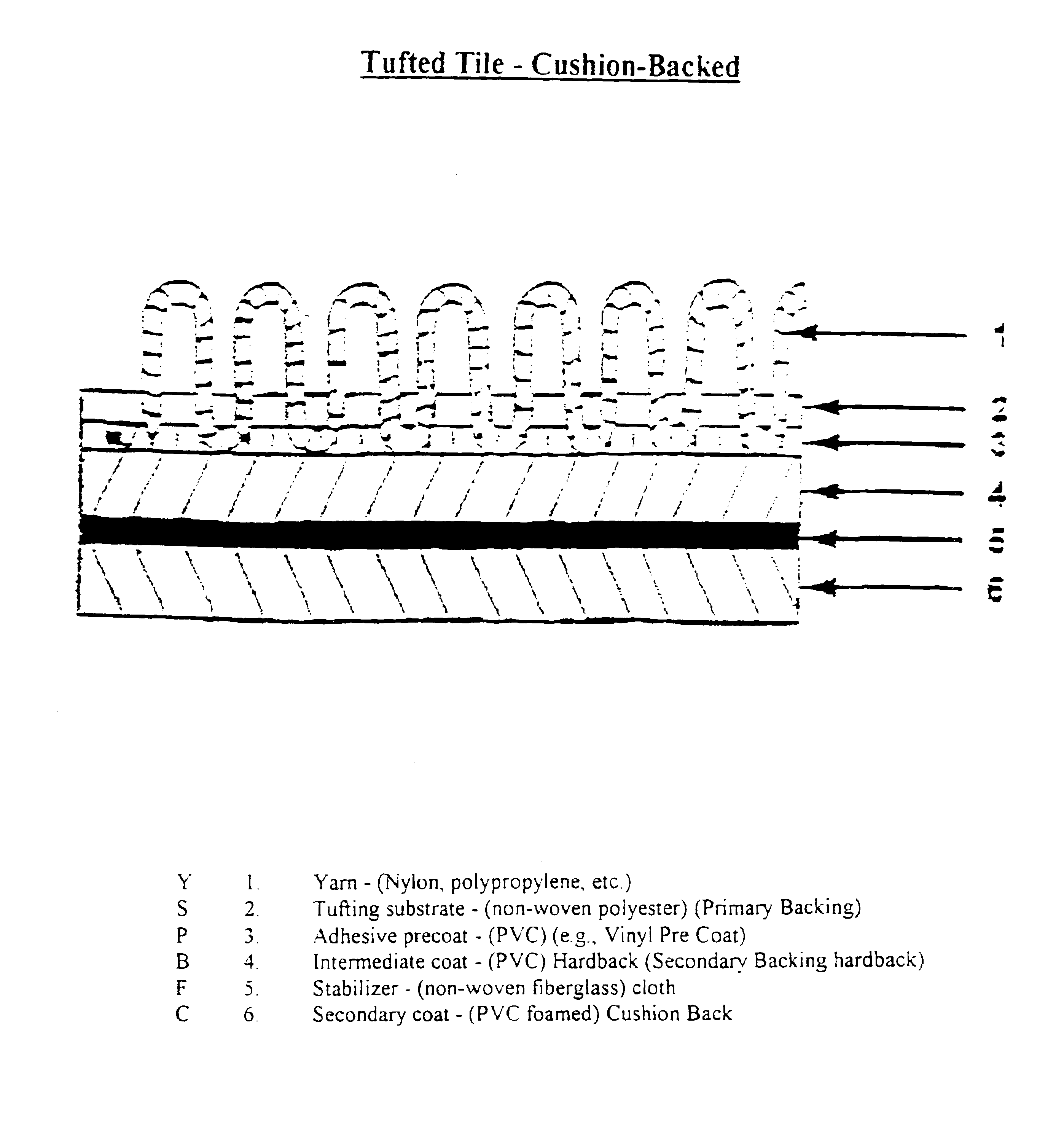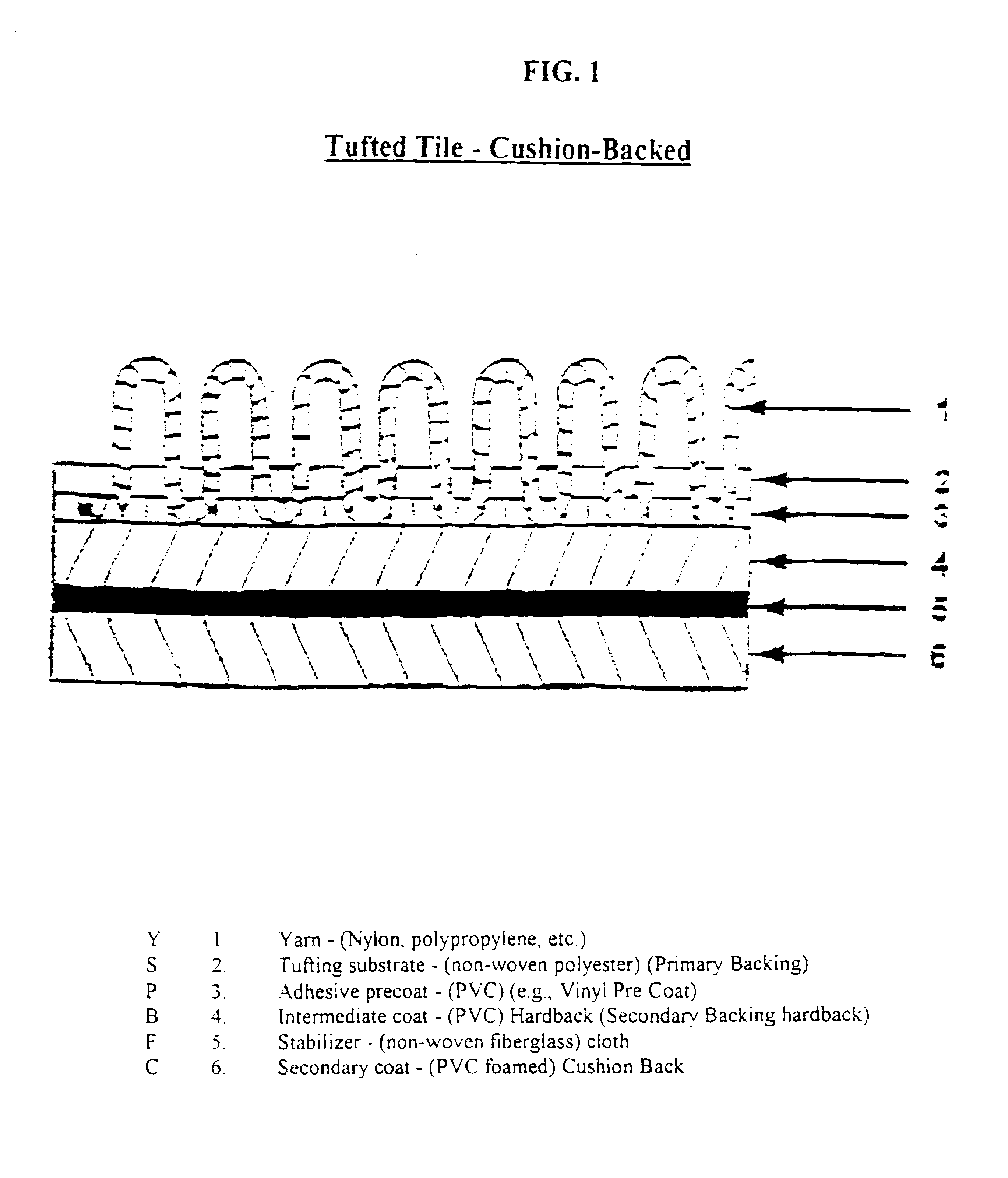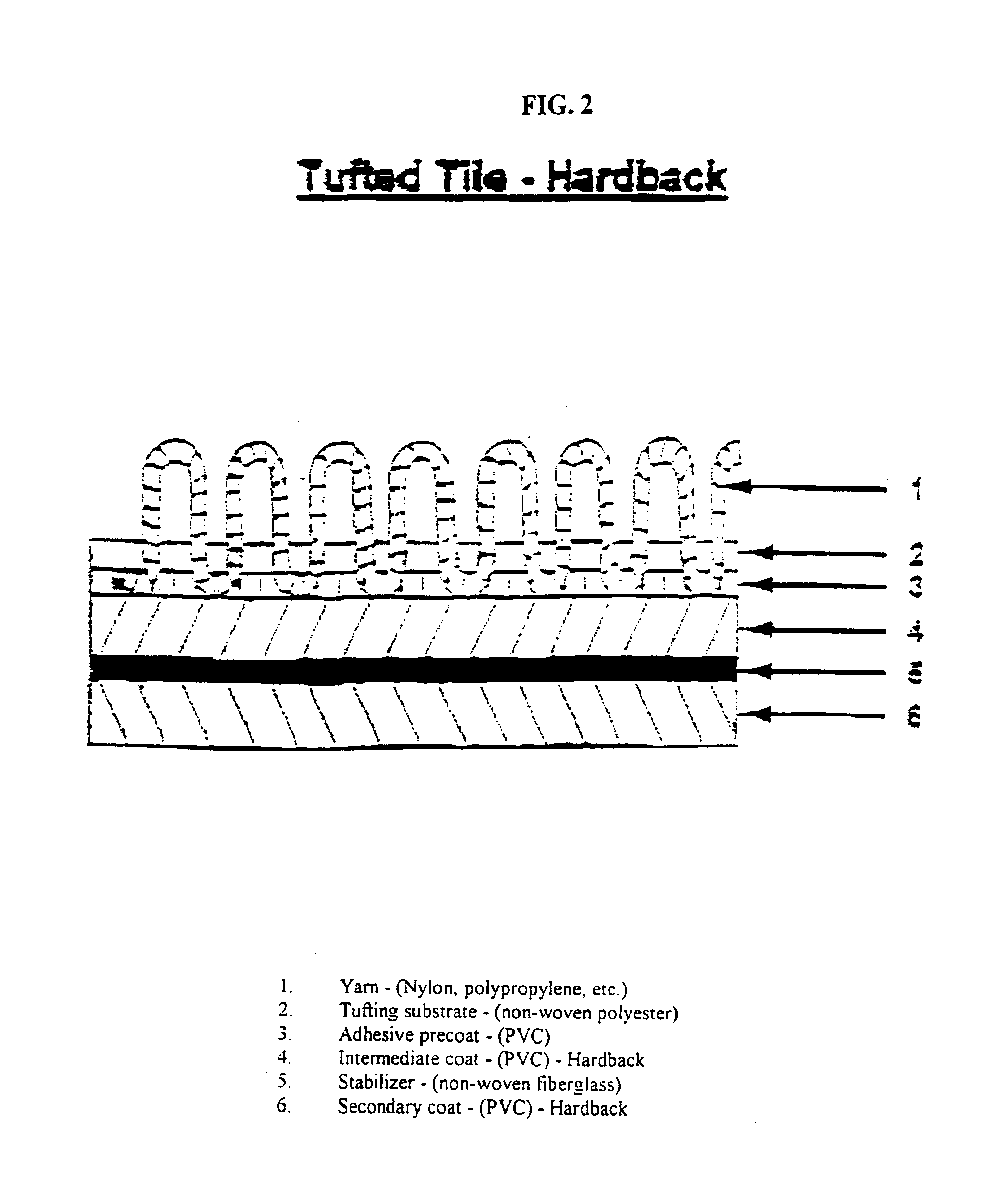Surface covering backing containing polymeric microspheres and processes of making the same
a technology of polymeric microspheres and backings, which is applied in the field of backings containing polymeric microspheres, can solve the problems of poor dimensional stability, inability to incorporate non-woven fiberglass fleece or scrim in the secondary backing composite, and difficulty in precise temperature, tension and orientation of textile products
- Summary
- Abstract
- Description
- Claims
- Application Information
AI Technical Summary
Problems solved by technology
Method used
Image
Examples
example 1
A secondary backing was made in the following manner:
Raw materials used were PVC Dispersion Resin, PVC Blending Resin, Jayflex 77 and Santicizer 160 plasticizer, Vanstay 5956 stabilizer, Printex G carbon black powder and Dualite M6032 or M7000 Microspheres. The batching equipment was a Nauta Planetary Mixer, model MBX-1225 with a 900 gallon working capacity.
First, 80% by weight of the plasticizer total was added to the mixer. The Dualite® polymeric microspheres were then charged manually into the Nauta mixer. The Vanstay 5956 stabilizer and Printex G carbon black were then added, and the mixer turned on. Both PVC resins were added and allowed to mix until smooth. The remaining plasticizer was added and allowed to mix.
A 10 fluid ounce sample was taken and tested for viscosity using a Brookfield RVF viscometer at 20 rpm with a #7 spindle. The sample was also checked for gelation temperature and density. The compound was then pumped to a tile line second coater for coating onto the car...
example 2
A secondary backing was made in the following manner:
Raw materials used were PVC Dispersion Resin, PVC Blending Resin, Jayflex 77, Jayflex DINP and Santcizer 160 plasticizers, AZ 120 blowing agent, Ferro TC5583 activator, Printex G carbon black powder and Expancel 091-DE80 microspheres. Table 3 sets forth the amounts.
TABLE 3PhrChemicalAmount (lbs.)155.4Jayflex 77 (plasticizer)1,110224.9Santicizer 160 (plasticizer)50032.5AZ 120 (blowing agent)5042.6TC 5583 (activator)5251.00Printex G (carbon black)20680.0VC 433 (resin)1,600720.0VC 260SS (blending resin)40083.0Expancel 091 DE80 (microspheres)60.0
The batching equipment used was a Hockmeyer disperser.
First, the Jayflex 77 and DINP plasticizers were added to the mixer and then the S60 plasticizer was added into the mixer. Afterwards, the blowing agent (AZ120) and activator (TC 5583) were added into the mixture at low speed and then were mixed at high speed for 5 minutes. Then, with the mixer again set at low speed the carbon black powder...
example 3
Example 2 was repeated expect the initial layer of vinyl hard back was replace with the same foam formula that was applied at the second coater station. The particular process settings used in this process were as follows:1. Line speed was 14 to 16 fpm;2. Oven residence time was 5 to 7 minutes;3. Process Tension—minimum required throughout the process;4. Initial Foam Density-Liquid—5.3-5.6 Lbs / gal;5. 1st Coater Wet Film Thickness—30 mils.;6. 2nd Coater Wet Film Thickness—40-50 mils.;7. Infrared Heater Settings, deg. F.;
#1 IRstd#2 IR175#3 IR160#4 IRoff8. 4 Zone Air Temp Settings, deg. F.;
Zone 1-350°(340-355)Zone 2-350°(340-355)Zone 3-350°(340-355)Zone 4-350°(340-355)Finished Product:1. Total weight was slightly less than a standard hardback tile, 112 ozs / sq yd.2. Foam thickness was 0.125 inches.3. Foam density was 22-26 Lb. Per cubic foot.4. Compression Resistance @ 25% : 25.1 PSI.5. Compression Set: 15.0%6. Moisture Absorbency: <10%7. Delamination—the back will not delaminate.8...
PUM
| Property | Measurement | Unit |
|---|---|---|
| Length | aaaaa | aaaaa |
| Percent by mass | aaaaa | aaaaa |
| Density | aaaaa | aaaaa |
Abstract
Description
Claims
Application Information
 Login to View More
Login to View More - R&D
- Intellectual Property
- Life Sciences
- Materials
- Tech Scout
- Unparalleled Data Quality
- Higher Quality Content
- 60% Fewer Hallucinations
Browse by: Latest US Patents, China's latest patents, Technical Efficacy Thesaurus, Application Domain, Technology Topic, Popular Technical Reports.
© 2025 PatSnap. All rights reserved.Legal|Privacy policy|Modern Slavery Act Transparency Statement|Sitemap|About US| Contact US: help@patsnap.com



